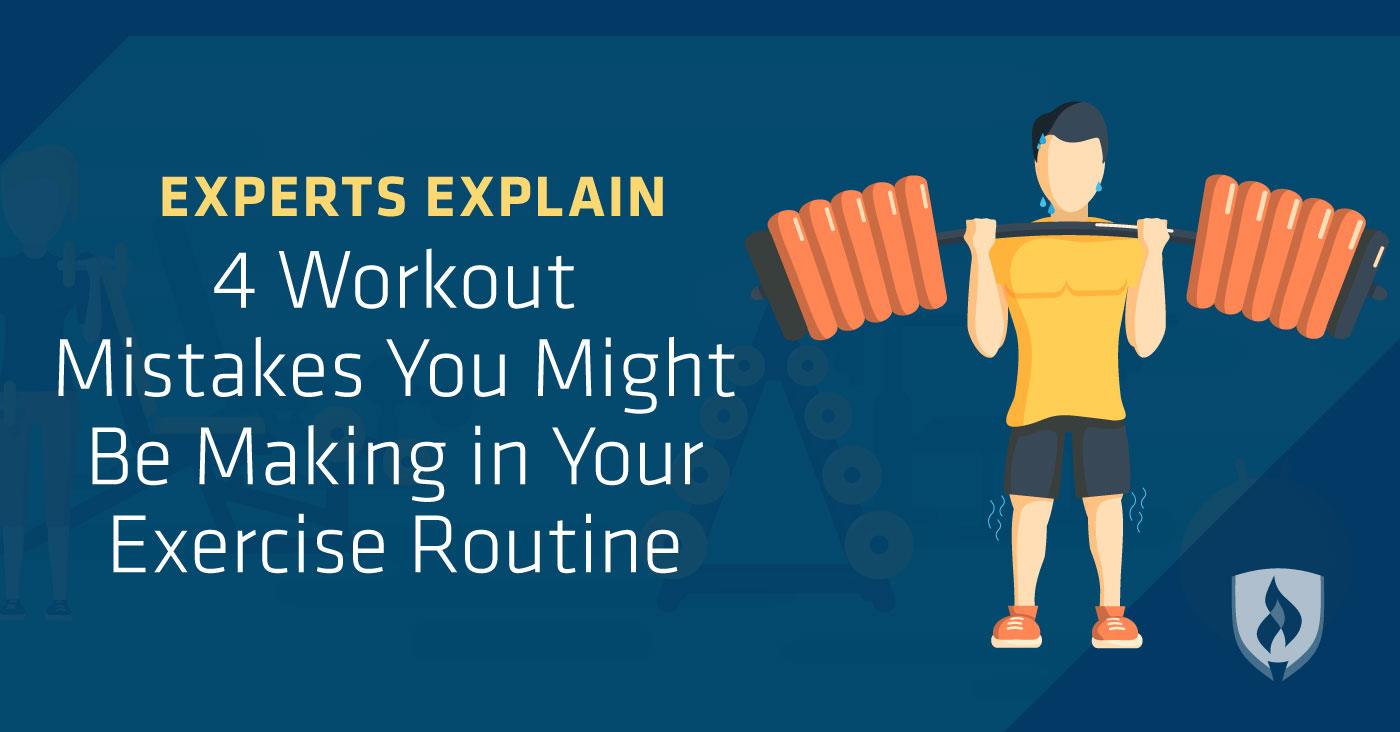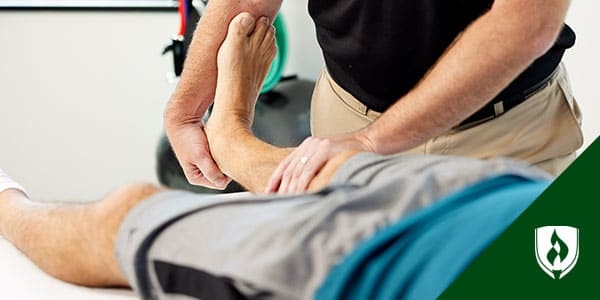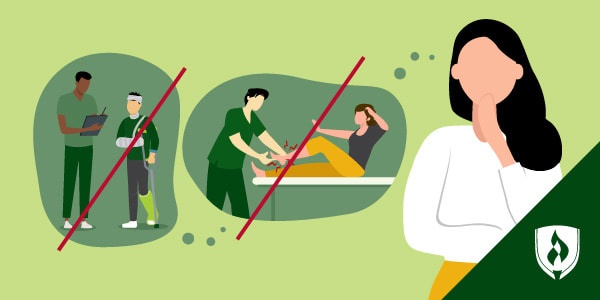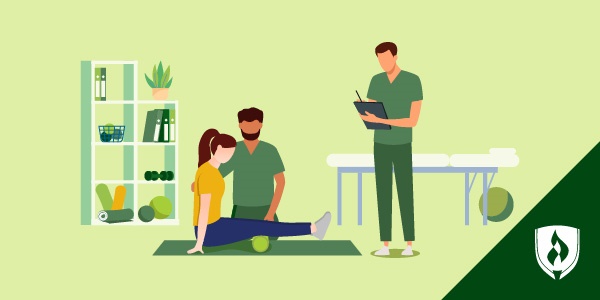Experts Explain 4 Common Mistakes You Might Be Making in Your Exercise Routine
By Megan Ruesink on 06/02/2017

Injuries are an annoying and painful fact of life, particularly for those who work out regularly. Worse yet, injuries don’t care if you’re a gym rat pumping iron daily or a beginner just starting a new workout routine—they can and will happen to anyone who isn’t careful. So what can you do to make sure your workout routine isn’t doing more harm than good?
When it comes to preventing exercise-related injuries, there isn’t a better group of people to ask than physical therapists (PTs). They spend their days rehabilitating people with injuries of all stripes. This gives them plenty of knowledge on how to prevent them from happening in the first place.
To help you steer clear of the physical therapist’s office, we’ve asked PTs about some of the common mistakes people make in their workout routines and what you can do to avoid them.
4 common workout routine mistakes
We identified four workout mistakes you could be making. Read below to get some physical therapy advice on how to work out the right way, stay healthy and get in shape.
1. Weight overloading
“Often when people use weights or machines, the tendency is to attempt the exercise with a lot of weight, which invariably sacrifices form,” says Physical Therapist Andrew Broden. “At its best, this simply provides less benefit to the target muscles. At its worst, this can lead to serious injury.”
Insecurity is the mother of a lot of exercise-related injuries. When you’re in a gym full of experienced lifters who are hoisting impressive amounts of weight, it’s easy to overload yourself to try and appear you belong. But one of the quickest ways to prove you don’t belong is by overdoing it and hurting yourself due to poor form.
Doing it the right way: First and foremost, focus on yourself, not what others in the gym are doing. Remember that they all had to begin somewhere, too. Start small and increase the weight gradually over time.
Broden says a good rule of thumb for determining the right starting weight is finding a weight where you’re able to complete at least 10 repetitions of the exercise with proper form. From there, you can build strength the safe way and increase your weight as it starts to become less challenging.
2. Speed stretching
For many, stretching can be an afterthought or something you half-heartedly do at the end of a workout routine. However, stretches should be considered part of your workout routine and as such, are an exercise that many people do wrong.
“So often people whip through these making little to no impact on the muscle length,” says physical therapist Sarah Whitmore. Avoiding this simple step after exercise can increase tightness in the body, causing muscles to pull on joints. This can lead to major discomfort or even injury.
Doing it the right way: More than anything, lack of proper stretching is a mental mistake—it’s easy to blow it off after your workout because you’re tired or relieved to be done. Whitmore says the key is to take your time and make a conscious effort to stretch every muscle group for 20–30 seconds each after any workout.
There are limits, however. Whitmore warns that overstretching or pushing your muscles too hard during this period can cause trouble. “If something is hurting [during stretching], you're probably doing it wrong,” Whitmore says.
3. Working just one muscle group
Maybe you’ve always wanted those washboard abs or killer biceps. Because of that, you spend hours doing different types of sit-ups or crank out a few hundred curls and call it a day. This can also lead to problems, according to Borden.
“Anatomically, each joint has an agonist muscle and an antagonist muscle,” Borden says. “These words are very similar to the literary terms protagonist and antagonist and work the same; one pulls the joint one way and the other pulls it the other way.”
Using the biceps as an example, this is an agonist muscle, meaning it contracts. When working out this muscle, it’s important to also exercise the triceps, which are the antagonist muscles that relax the arm.
When a muscle group is imbalanced, your body tends to overcompensate and that can eventually lead to injury.
Doing it the right way: “Like in literature, you have to develop each [muscle group] equally,” Broden says.
He uses another example to demonstrate a correct routine: when performing a bench press to build strong chest muscles during a workout, you must be sure to also work out the back muscles to counterbalance it.
“This imbalance can lead to forward-flexed posture with hunched shoulders and a litany of issues down the road,” he adds.
4. Poor form
“The biggest concern I see when people work out is posture or body form,” Whitmore says. “I think some gym machines contribute to this problem, but mostly it's poor education on how to use the machines and proper posture when performing exercises, cardio and weight equipment.”
Poor form, particularly when lifting weights, can place stress on joints and muscles that are not intended to be targeted by a particular exercise. Ask anyone who has ever dislocated a shoulder—it doesn’t take a ton of weight to cause damage if the force is applied to the wrong area.
Doing it the right way: Proper form varies substantially depending on the exercise you’re doing, but according to Whitmore, “neutral” is the key.
“You typically want a neutral posture with your neck and back all in alignment,” Whitmore says. “Not overly slouched, extended or with shoulders back and down.”
Take the time to learn the proper form for each exercise in your workout routine and focus on completing each lift or exercise smooth without herky-jerky movements. This can go a long way toward preventing injury.
Working out the right way
Now that you know some basic things you might be doing wrong in your workout routine, you probably want some pointers on what you can do right. Here are a few tidbits of advice from the PTs on working out the right way.
Consult with a physical trainer or therapist
If you have any pre-existing injuries or conditions, this step is especially important, according to Broden.
“Physical therapists are trained medical professionals who specialize in prescribing exercise programs to work around or help heal injured or weakened tissues,” Broden explains.
Whitmore agrees, emphasizing that workout routines will vary depending on the needs and goals of the person putting in the work. “Seek advice from a trainer or a physical therapist to help with form or to identify appropriate exercises for you,” she says.
Start simple
If you’re a beginner when it comes to working out or lifting weights, then it’s important keep it simple. Start small to build a foundation on which you can keep building as you gain muscle.
“Push-ups, planks, body weight squats, lunges, walking and running are all fantastic exercises that can be done with no equipment and can still be plenty challenging, even for athletic individuals,” says Broden.
Once you start feeling more comfortable and are seeking a greater challenging, you can add in weights and progress to more complex moves. The most important thing is to avoid doing too much too soon.
Check your feet
It can be easy to overlook, but your shoes can actually play a role in helping avoid workout-related injuries. Whitmore says finding proper footwear is key—particularly for runners or people whose preferred method of exercise has repetitive impact on the body.
Whitmore advises getting fitted for your shoes and enlisting help selecting the right shoe based on the type of workout routine you’re intending on doing. You might be able to get away with a few jogging sessions in unsupportive shoes, but continually doing so can greatly increase your risk of injury.
Be proactive and avoid injury
Now that you’ve received some solid workout routine advice from physical therapists, you should be feeling more confident in knowing how to avoid exercise-related injuries. That said, even the most cautious athlete can be bit by the injury bug. If that day comes, rest easy knowing that physical therapists, as well as their assistants, have the knowledge to bring you back to top form.
Think physical therapy is a fascinating field to work in? You may be well-suited for this line of work without even knowing it! Check out our article, “7 Signs You Should Consider Becoming a Physical Therapist Assistant” to see if you have what it takes.
RELATED ARTICLES:




